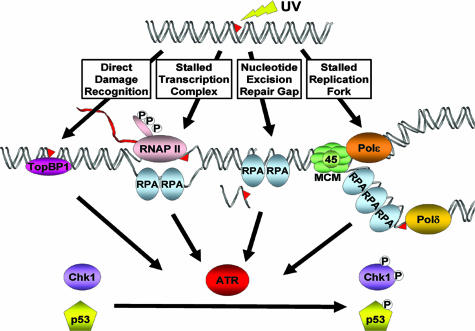Fig. 2.
Potential DNA damage detection mechanisms for initiating checkpoint responses. The primary damage itself may be recognized by damage-specific proteins that may activate the checkpoint directly. Alternatively, the stalled RNAP II constitutes the checkpoint signal and recruits checkpoint kinase ATR. RPA-coated single-stranded DNA gaps generated by nucleotide excision repair and the extensive RPA-coated single-stranded DNA generated by replication forks stalled at a damage site are known to be strong signals for checkpoint activation.

